How to Grow Sunflowers in Pots- It’s Super Easy!
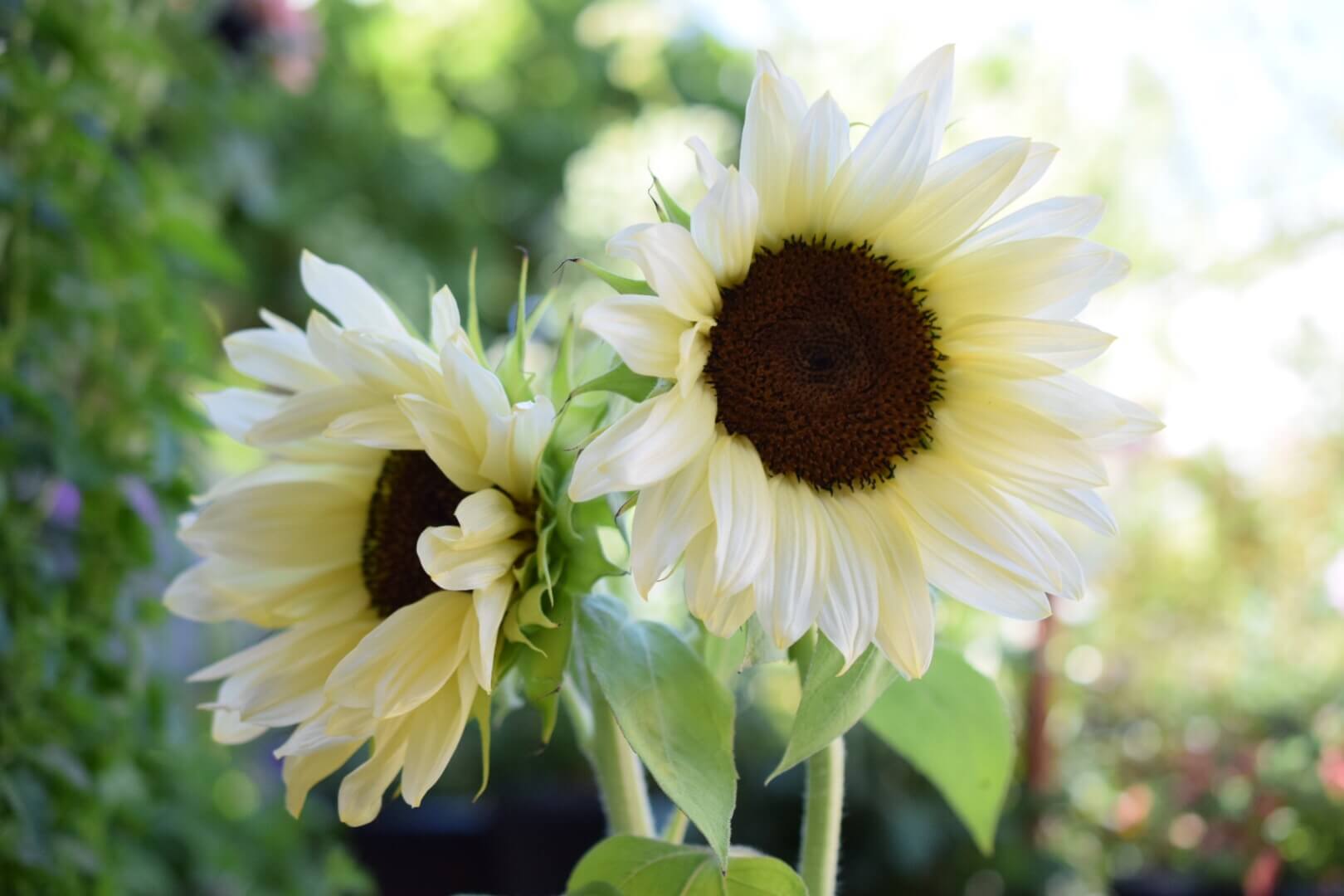
If you aren’t already growing sunflowers in pots you will want to be after reading this article because it is SO EASY! If you have 60 days left before your first frost you can even plant some ProCut sunflowers TODAY and see blooms this year! There is nothing like a cheery pot or two of blooming sunflowers to enjoy on summer days when it seems like everything else is suffering from the heat. Keep reading to find out all my tips and tricks to growing sunflowers in pots.
Disclaimer: when you shop through my affiliate links I earn a small commission which helps me create more content, at no additional cost to you! Thank you so much for your support!
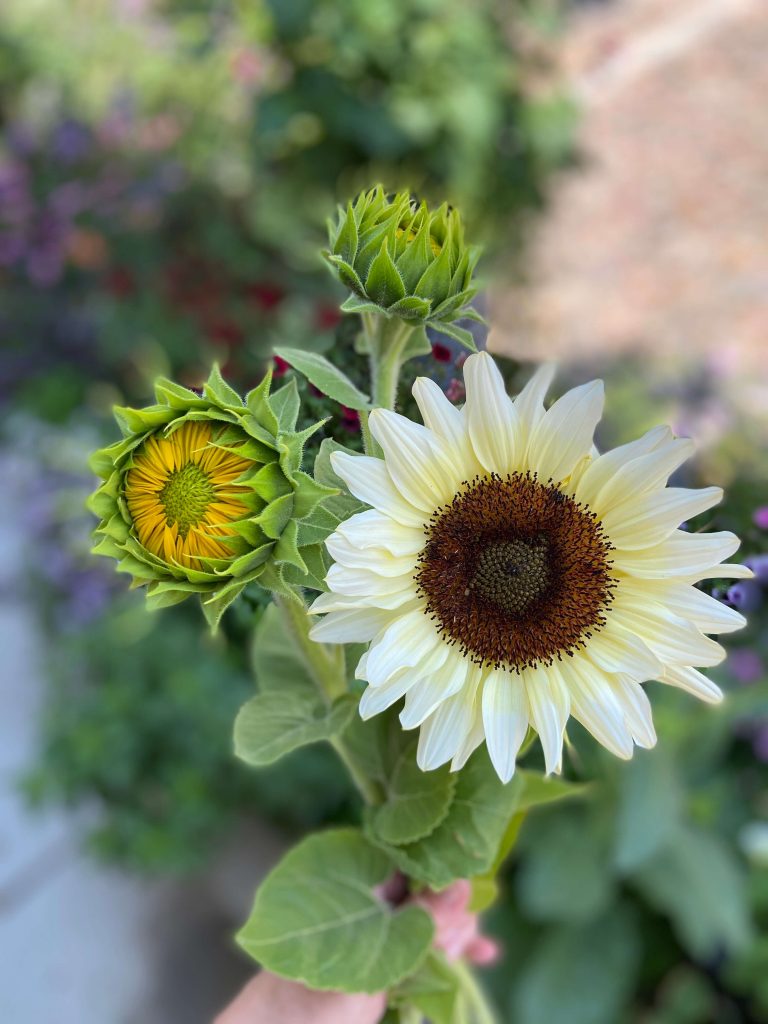
Why Grow Sunflowers in Pots
There are several reasons for growing sunflowers in pots. First, you might have no choice! I rent and every square inch of my yard is covered in either concrete or rock. So my entire garden is grown in containers out of necessity. If all you have is a sunny balcony you can still grow a pot or two of sunflowers! If you have more space, you can grow several varieties and even succession sow.
Second, they make great cut flowers. Sunflowers look great in the vase and last at least a week when harvested at the right time! One key factor is to choose pollen-free varieties if you plan on using them as cut flowers; we’ll talk more about that later!
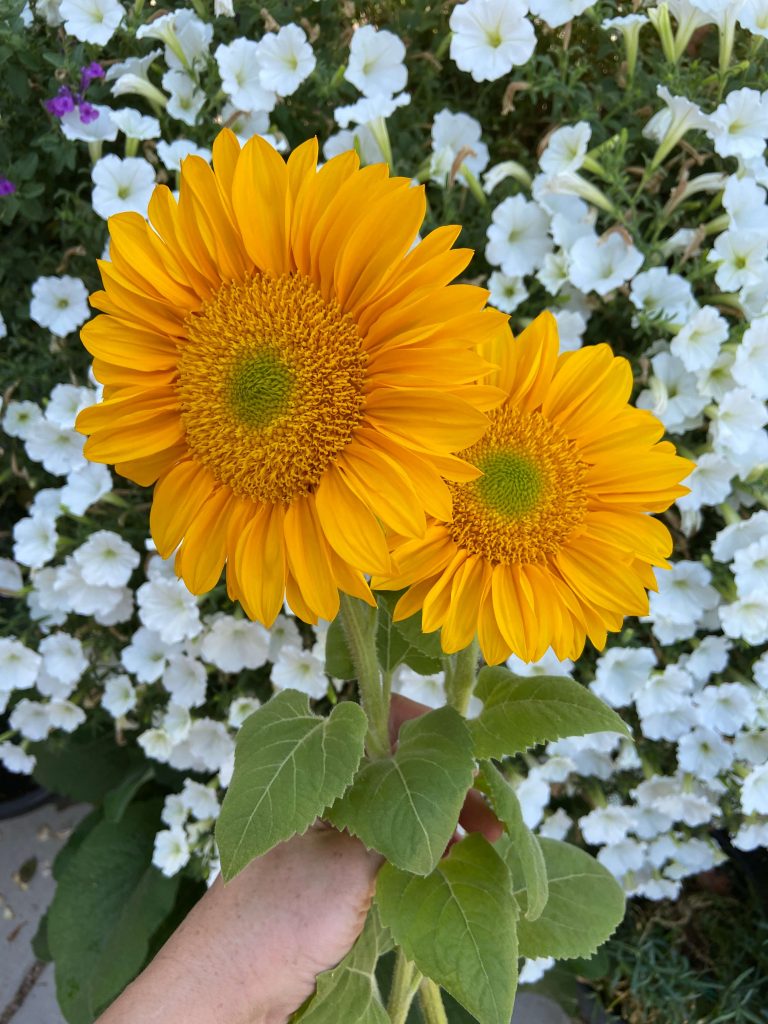
Third, sunflowers love the heat and full sun. It can be hard to find plants that will bloom in the heat of summer. Sunflowers thrive in the heat and as long as they are well watered will not even wilt! Make sure you have a full sun spot for your sunflowers!
Finally, sunflowers attract pollinators. Butterflies and bees love them. It is fun to watch all of the insect life that sunflowers will bring into your garden. I always like to include a couple of pots of sunflowers that are just for the pollinators.
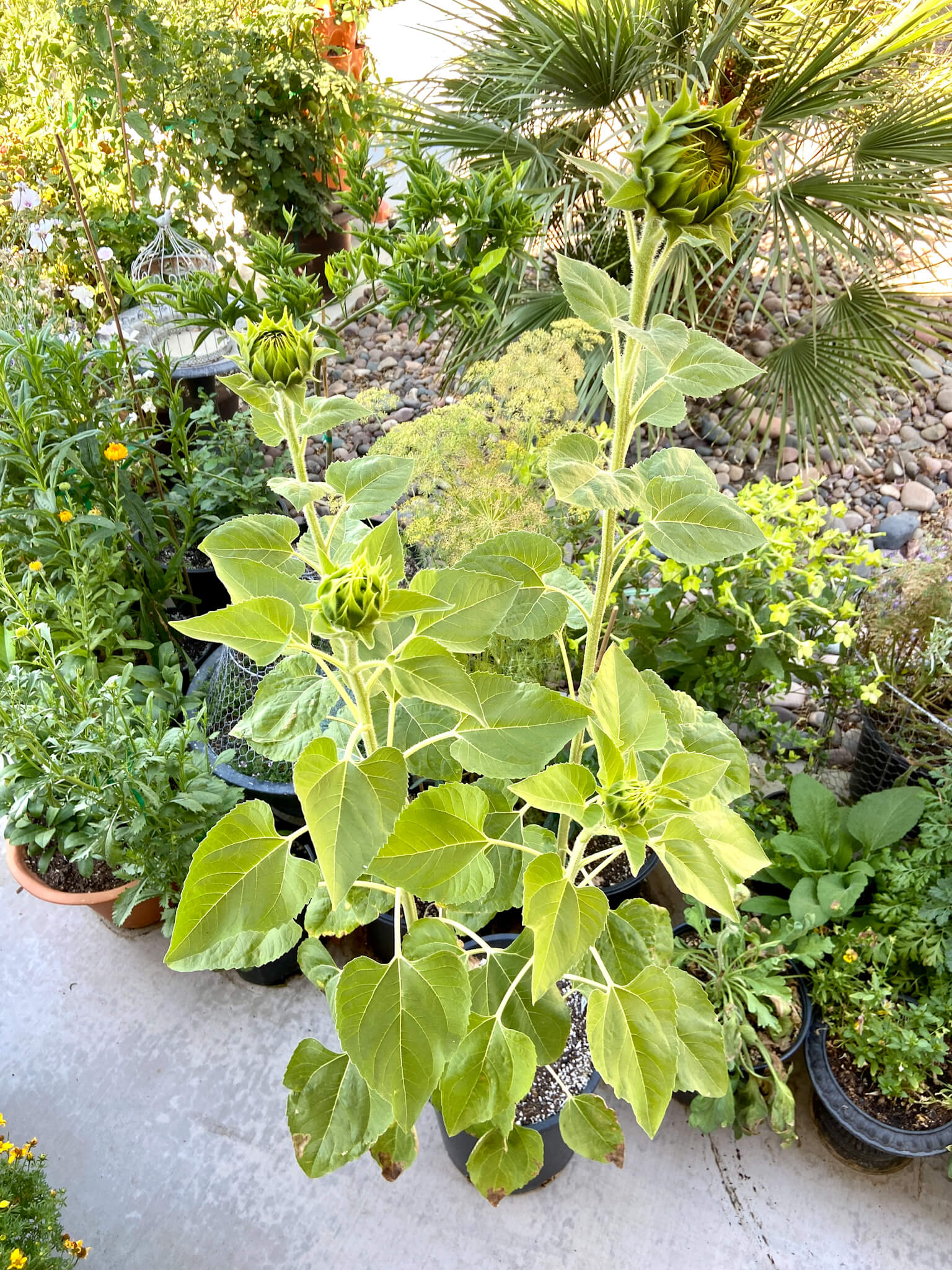
Steps to Growing Sunflowers in Pots from Seed
1. Choosing the Seed: Types of Sunflowers
There are several types of sunflowers and the type of seed that you choose will depend on what you need from the plant. I have never grown any of the snacking or bird seed sunflowers in pots so this article won’t be addressing those varieties, but instead will focus on the sunflowers grown for ornamental and cut flower purposes.
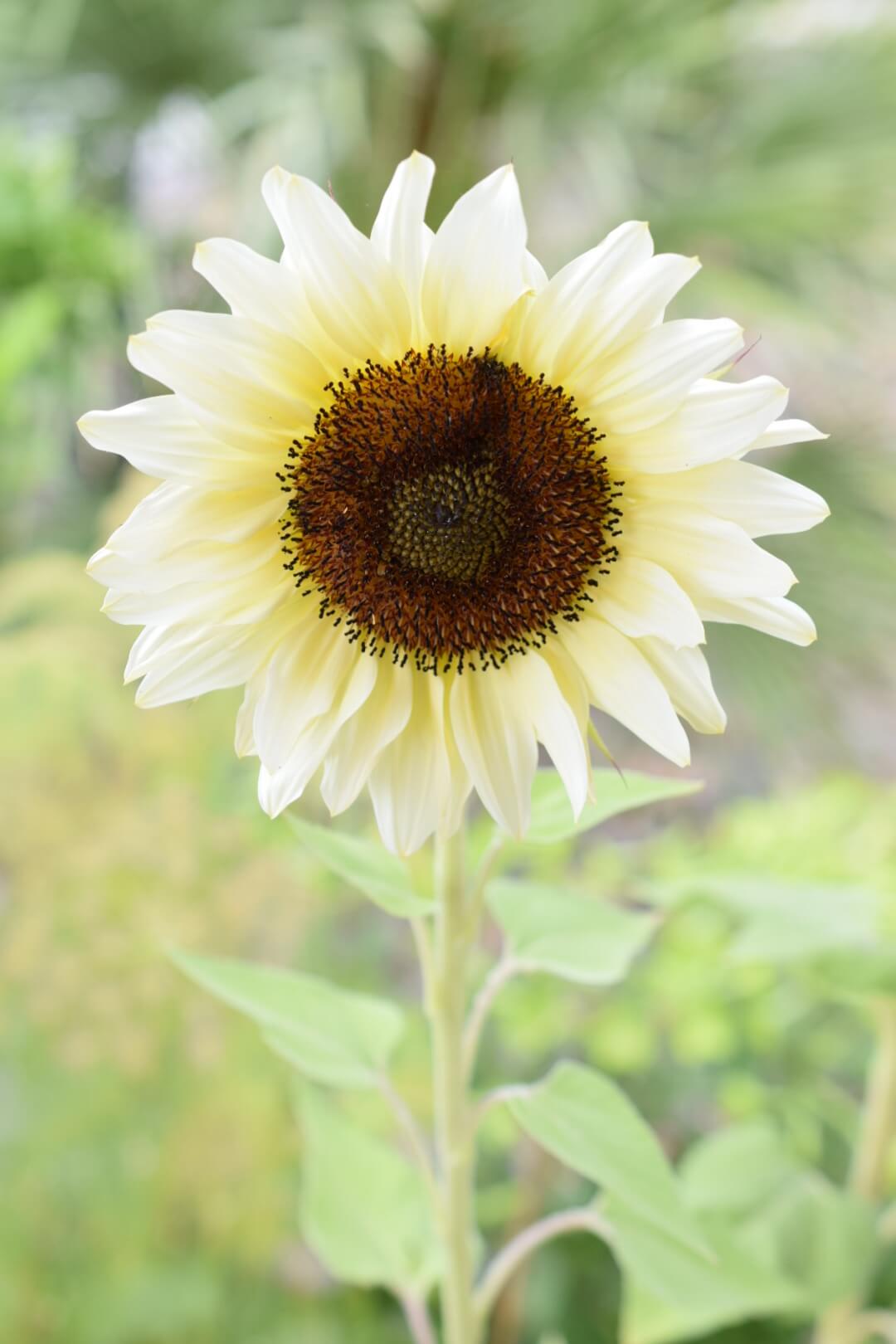
ProCut Sunflowers
When you are cutting sunflowers to bring into your home, the last thing you want is pollen spilling all over your table. Trust me- it’s a mess. This is where the ProCut series, which happen to be my favorite, come in. ProCut sunflowers are pollen free and come in colors ranging from cream to gold to red. They produce only one perfect bloom per plant. ProCuts are incredibly reliable and stick very closely to the maturity date on the seed packet. This is the variety to grow if you want cut flowers for the house, especially if you want blooms to coincide with an event you may be hosting.
Be aware that ProCut sunflowers are F1 hybrids and that means that seed gathered from them will not produce blooms that look exactly like the parent plant.
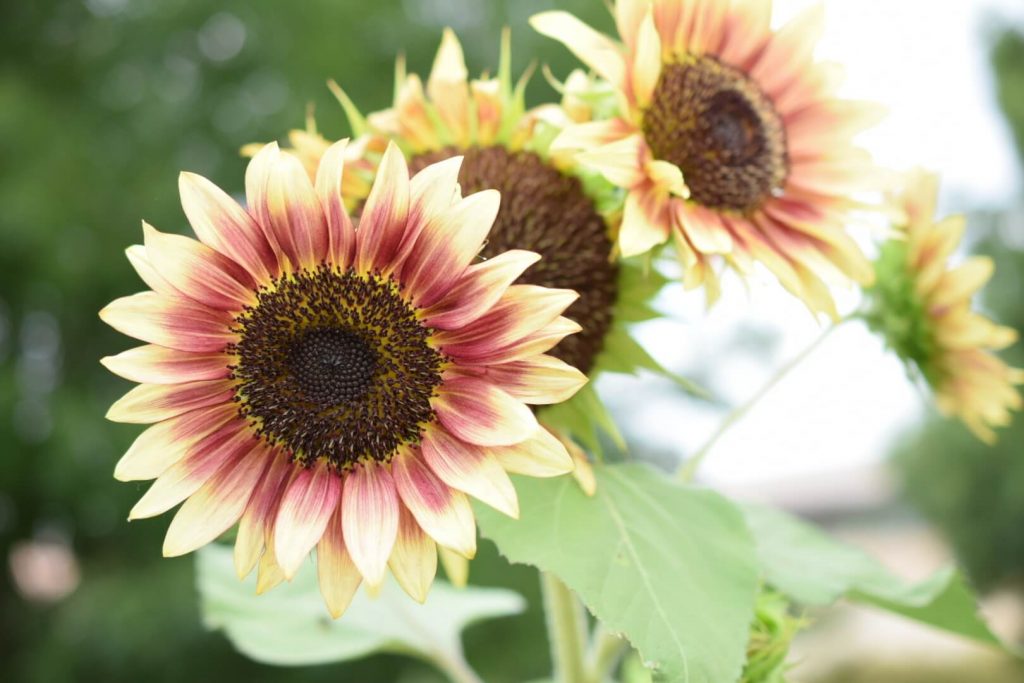
Branching Sunflowers
If you want a sunflower that is not just one and done like the ProCut series, then look for branching sunflowers. Branching sunflowers will keep producing blooms for several weeks. It is important to pinch them young to develop a good shape and make sure to keep them deadheaded. Some branching sunflowers are pollen-free, but others are not, so be sure to do your research when buying seed. Ruby Eclipse is a great pollen-free branching sunflower that I grow just about every year.
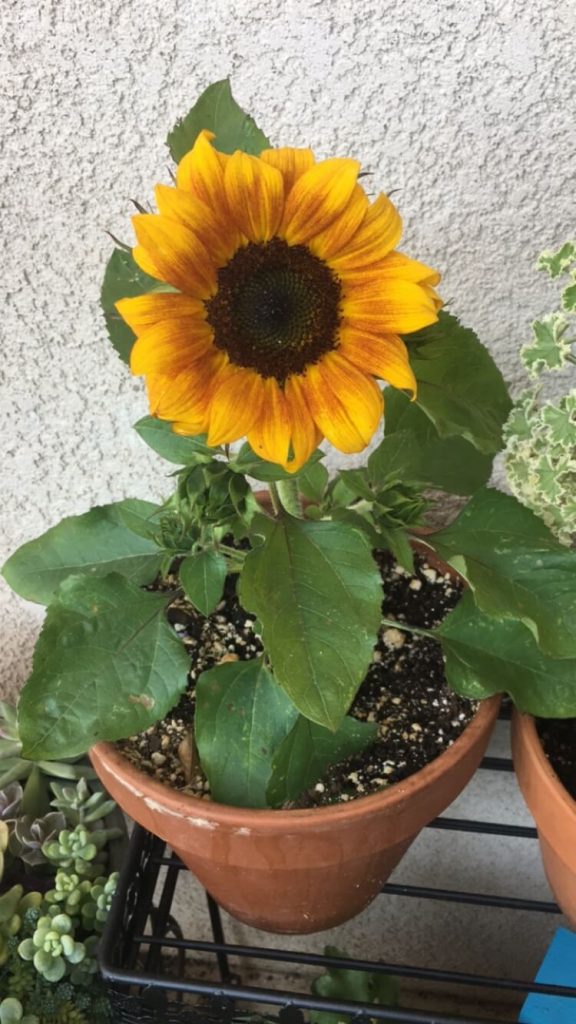
Dwarf Sunflowers
Dwarf sunflowers are so fun in pots! There are traditional dwarf varieties that will produce a few cute blooms. But there are some newer varieties, like Sunfinity Hybrid and everblooming, that will keep producing all summer long. You can buy seed for the Sunfinity Hybrid, but there are a couple of varieties on the market that must be purchased as small plants. These everbearing varieties include Suncredible Yellow by Proven Winners and SunBelievable Brown Eyed Girl by Monrovia. These sunflowers will produce hundreds of pollen free blooms and are day length neutral.
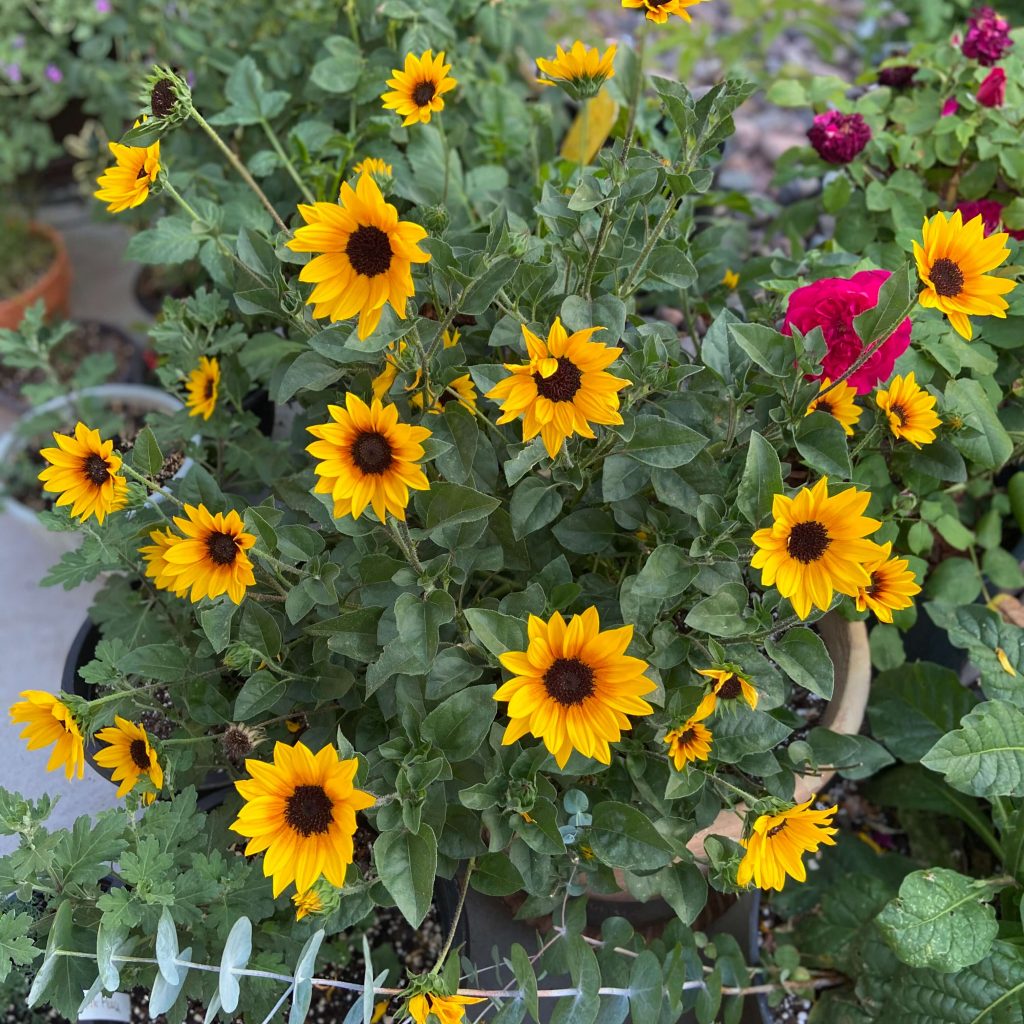
Day-Length Sensitivity
A note about day-length and sunflowers; some, mostly older, varieties are sensitive to the number of hours of daylight that they receive. These varieties need over 12 hours of daylight in order to bloom, so they do not work well in early spring or fall. I personally stick with day-length neutral varieties which do not care about the number of hours of light that they receive. The ProCut varieties are day-length neutral. For more information about plants and day-length sensitivity check out THIS article by Johnny’s Seeds.
2. Planting the Seeds
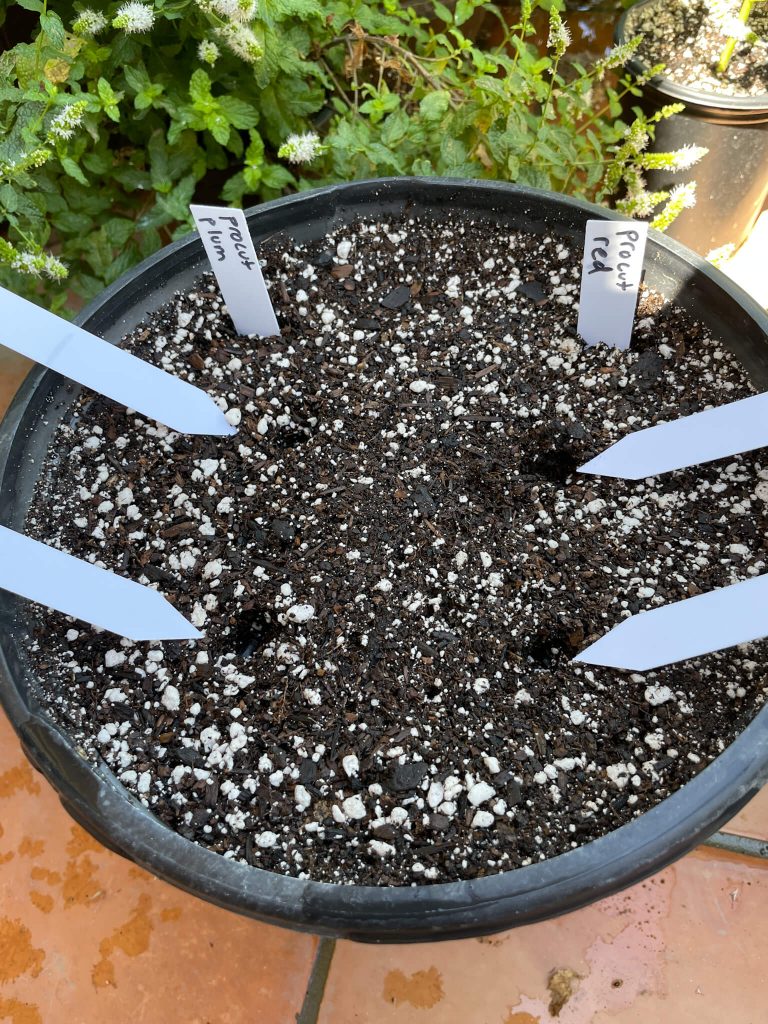
I don’t bother anymore with starting sunflower seeds indoors, but instead just plant them outside directly in the pot they will spend their life in. For ProCut sunflowers I use a 5 gallon pot for 4 plants. Going bigger in this case is not necessary because the plants will only be around for about 60 days or so until you harvest the blooms. Also, planting them closely results in blooms that are the perfect size for bouquets.
Begin by filling the pot to 1 inch below the lip with your favorite potting soil. I ALWAYS use FoxFarm Ocean Forest. It has all the nutrients that the sunflowers will need to grow and bloom. Next, water in the soil very well until it begins to drain from the bottom. Then, plant 4 seeds evenly spaced out in the pot in the form of a square. Sometimes I will plant several colors of ProCuts in one pot instead of just one variety. Plant them about ½ inch deep and cover with soil. Label if you want to know the variety names once they bloom. Last, water in lightly and cover with a cloche so the critters don’t snatch your sprouts.
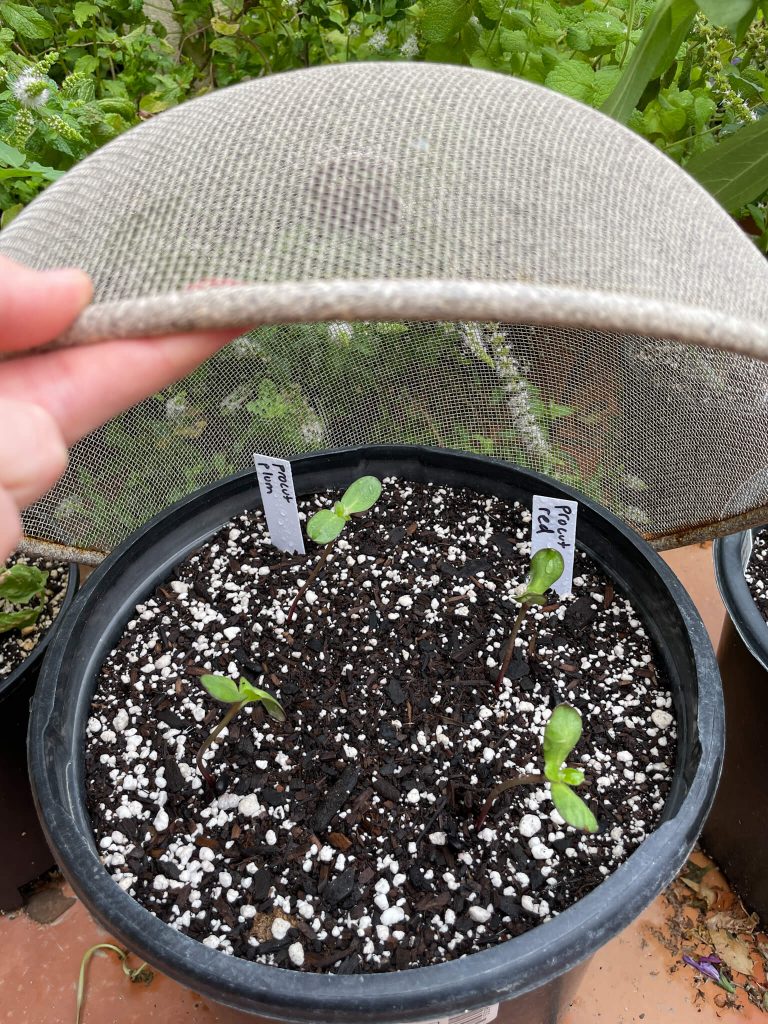
For branching sunflowers the process is the same except you can use a pot larger than 5 gallons if you like and you will only plant 1 seed per pot. If your seed is older it is a good idea to plant two seeds in case one does not sprout. If they both sprout, then thin out the weaker seedling. For a clean look, I keep ProCuts and branching sunflowers in separate pots.
Once the sunflower seeds sprout there is not much more to do other than keep them watered! Remove the cloche once they outgrow it. If they flop a bit after removing the cloche don’t worry, they will stand up straight eventually. DO NOT PINCH ProCuts. Only branching sunflowers should be pinched.
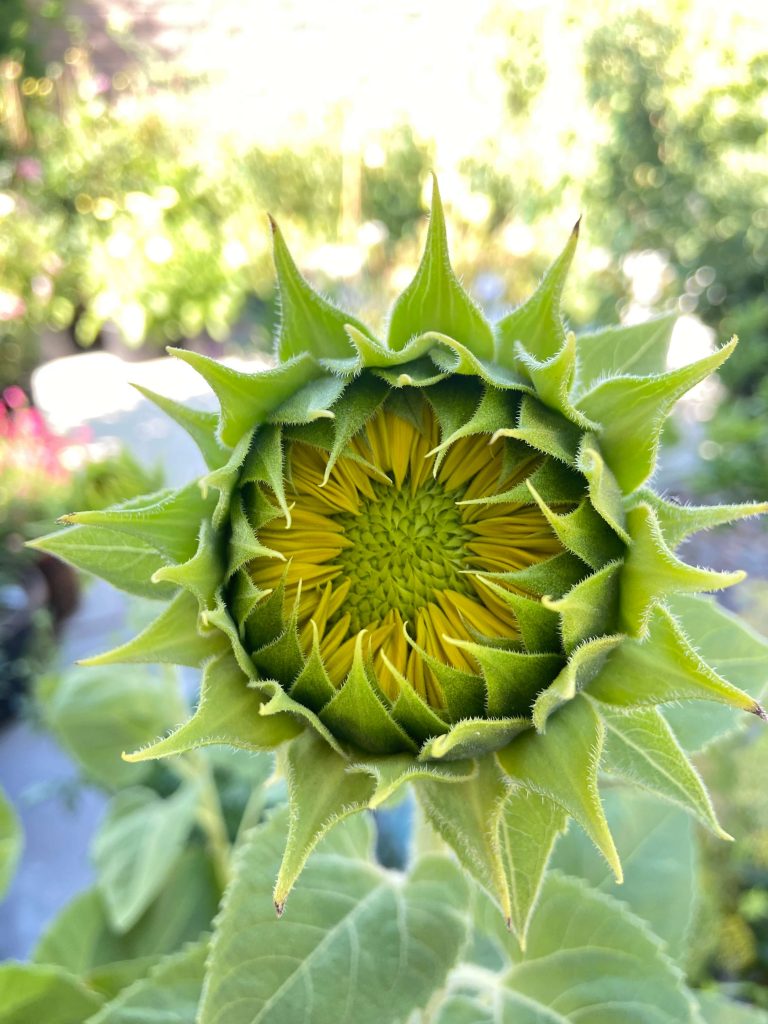
3. Harvesting Sunflower Blooms for Bouquets
Here’s a little secret for you: your sunflower blooms are ready to be harvested A LOT sooner that you think they are. The best time to harvest a sunflower for the vase is when the bloom is just starting to show petals. Harvesting at this stage greatly increases their vase life. There is also less time for bugs to get at them or bees to pollinate them (pollination decreases vase life).
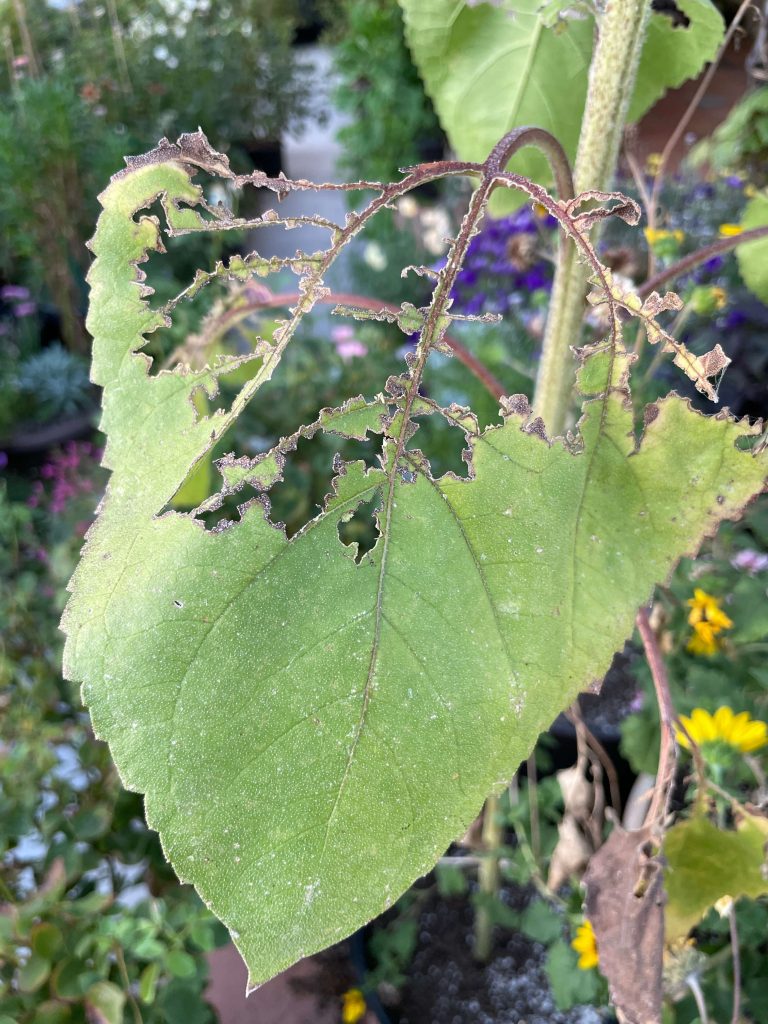
4. Sunflower Problems
Sunflowers are such a quick crop, usually about 55-60 days, that there isn’t a whole lot of time for an insect or disease to gain a foothold. The main problem I encounter with growing sunflowers is that the finches love to eat their leaves. The only preventatives that I have used are protecting with a cloche while the plants are small, and then draping some bird net once they grow larger.
Additionally, sometimes budworms will burrow into the blooms. Unfortunately, it is difficult to know that the bloom has a budworm until it opens. If you are worried about this happening, you can preventatively spray Bacillus Thuringiensis (B.t.). You need to spray every 7-10 days as the bud develops.
Thank you so much for stopping by! Let me know in the comments if you have ever grown sunflowers in pots! If you are interested in growing zinnias in pots check out THIS article! And don’t forget to join me on Instagram!
Happy Gardening!
Heather
Love this article or want to save it to read later? PIN it!!!
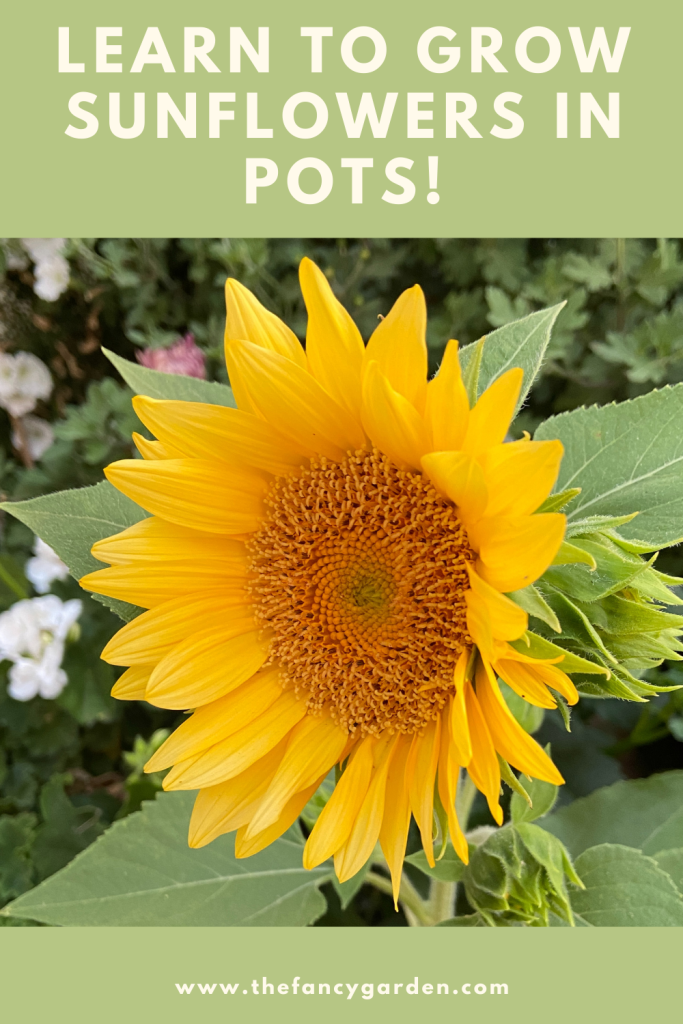
Related Posts
How to Easily Grow Beautiful Zonal Geraniums from Seed
When I discovered how easy it is to grow beautiful zonal geraniums (Pelargonium hybrids) from…
08/01/2023How to be Successful Growing Anemones in Pots
Anemones (Anemone coronaria) are one of my favorite flowers to grow in pots for a…
12/06/2022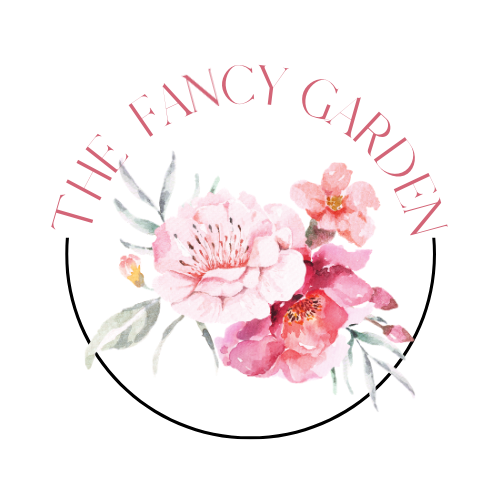



Leave A Comment